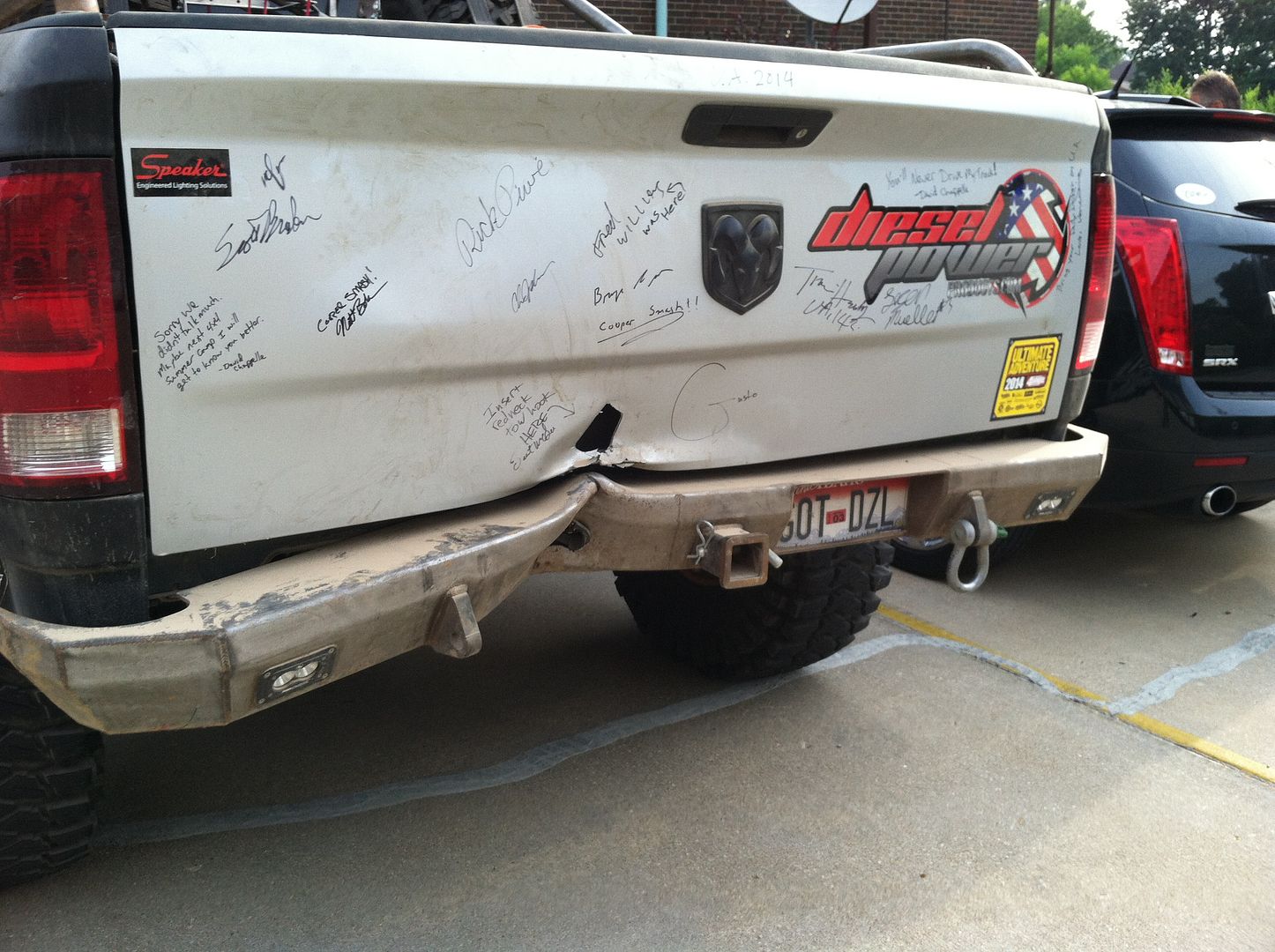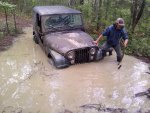
In my opinion, adding extra weight into the rigging system is very bad. This is especially true for large 5x rated steel shackles attached to questionable recovery points. That is how the above picture happened when I was on Ultimate Adventure 2014. The mounting point on the stuck vehicle failed and the entire thing, including lots of heavy steel like the shackle, went flying. It was really lucky that nobody got hurt. The steel on the bumper on the back of Coopers truck is formed 3/16"!
Soft shackle inspection. You are using the same criteria you do for the winch line, especially in the noose area. That is where they will fail at MBS typically.
This is a good guide to get you started.
My personal cut off point is more than a full strand of damage in the noose area.
The fuzzing in the body isn't generally anything to be worried about in my experience.
How do you know a steel shackle you pick up is good? Has it been overloaded? Dropped on a hard surface? Is it a quality unit? How do you know.....
A caliper isn't going to tell you the quality of the steel.
I've refused to use, or retired, a fair number of steel shackles......bent pins, bent bodies, corrosion pitting, etc.
In the end, we just gloss over a TON of issues with steel shackles because they make us FEEL better. There are just as many plusses and minuses, not only to the shackle themselves, but also more importantly what the shackle is attaching to. Generally people just ignore that because it is steel and makes them feel better.



